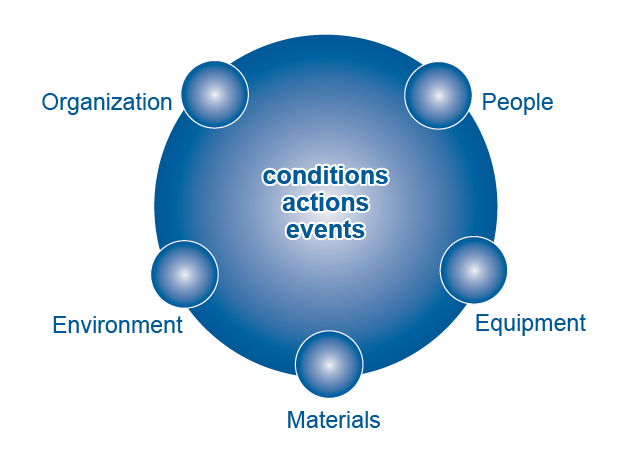Exemplary workers know what is important to
their jobs and organizations—they put their efforts in the right places. Two
people with similar experiences and education may perform quite differently
when starting a new job. Within weeks, one person starts to take the initiative
to carry out tasks and make decisions; the other person remains hesitant and
uncertain. When the work conditions change, the first person adapts quickly but
the other becomes upset and uncertain. I contest that one of the factors that
makes the first person effective is that he or she has figured out what is
important to the job and the organization and uses specific thinking strategies
to work effectively, efficiently, and safely.
In addition to being skilled, exemplary workers
use a broad range of critical thinking strategies to
maintain outstanding performance. They do the most important things, do them
effectively, and do them efficiently. Because they know what is important to
the job and the organization, they effectively coordinate their actions with
others and make decisions in the best interest of their organizations.
Knowledge and thinking skills empower workers to achieve exemplary performance,
be flexible as workplaces continue to evolve, and provide leadership.
Exemplary performance
can have many benefits for employees:
- job satisfaction
- recognition from peers and supervisors
- potential for keeping the job during slow economic times
- potential for receiving salary/wage increases or bonuses
- opportunity for new or different work assignments
- potential for
promotion
All organizations want to get the most out of
their assets, including their people. Organizations prefer to have exemplary
workers that contribute to business success. One way for workers to focus on
issues important to an organization is to use the LO-PEMEO model as shown in the following illustration.
|
 |
LO-PEMEO
stands for Loss and Optimization of People, Equipment, Materials, Environment,
and Organization. As an example: Loss
to People is illness and injury; Optimizing Peoples’
performance is working effectively and efficiently; Loss to Equipment
is damage and shortened operating life; and Optimizing
Equipment is using equipment effectively and
efficiently.
|
Each domain can affect the other domains. For
example, if there is a large acid spill, both worker and public safety could be
affected. Materials, equipment, and the environment could be damaged, and the
organization could experience losses. Optimizing the use of tools and equipment
that are designed for the application improves safety, reliability, and product
quality, reduce waste, and increase production.
Furthermore, workers can assess the work
environment by considering the conditions,
actions, and events within the workplace that affect PEMEO. Workers can ask
themselves specific questions about minimizing losses and optimizing
performance of PEMEO. Specific thinking strategies and questions for each PEMEO
domain apply to most tasks and work environments.
| Being aware of one’s own thinking strategies contributes to
planning and working effectively and helps to communicate effectively when
collaborating with others and mentoring apprentices. |  |
To learn more about
the LO-PEMEO model, refer to The
Exemplary Worker books series. These books place a strong emphasis on using
thinking strategies and asking
the right questions—the goal is for workers to contribute to
improved worker, job, and business performance.
Does this model
cover the major areas of concern for you in your job?
Gordon Shand is
President of HDC Human Development Consultants Ltd. He has 35 years of
experience designing and developing educational and training programs that have
excellent practical value and contribute to the customer’s business success. www.hdc.ca




